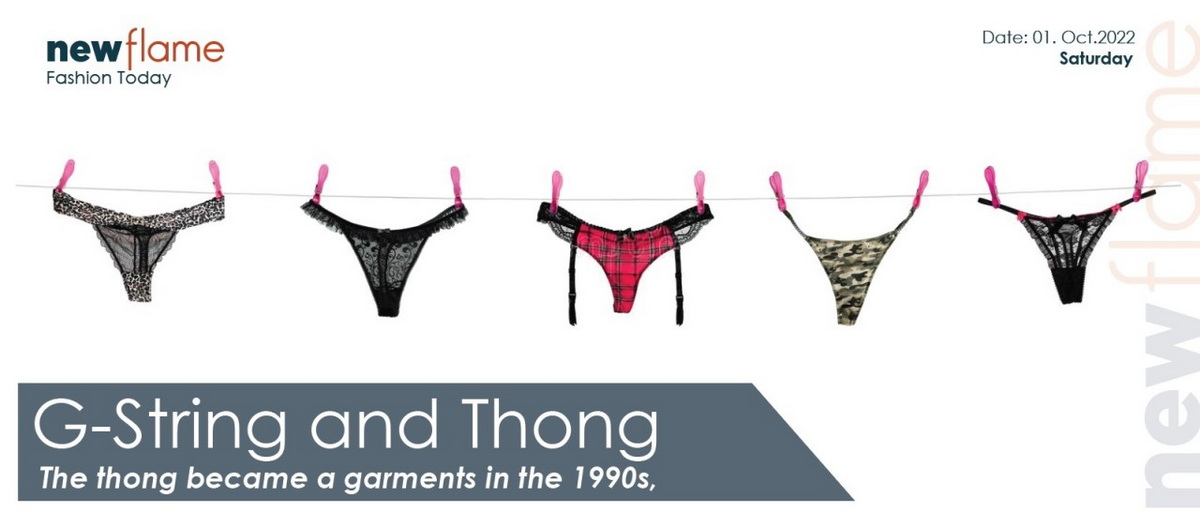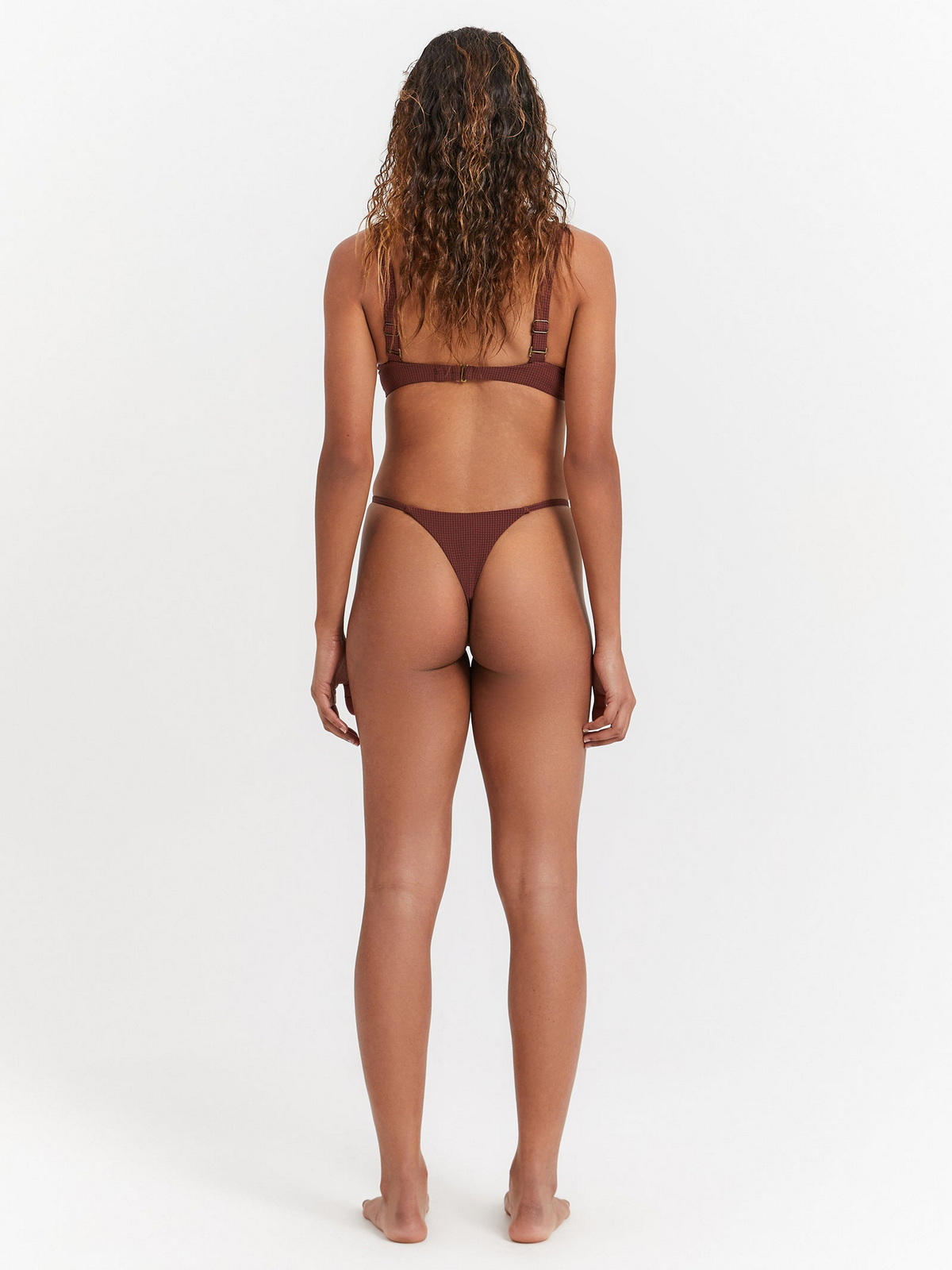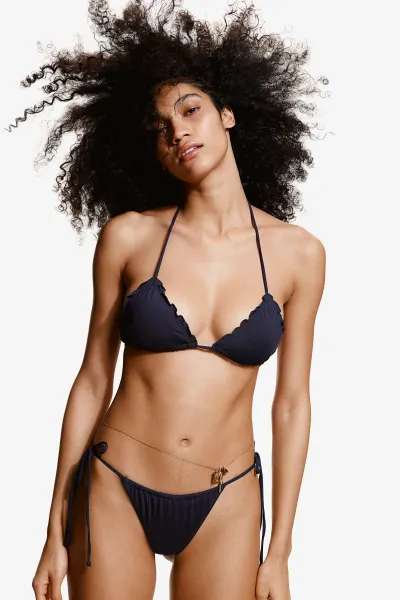Content Menu
● Understanding G-String Swimwear
>> Design Features
● The Evolution of G-Strings
>> Historical Background
● G-Strings vs. Thongs
● Cultural Significance
>> Fashion Statements
● Practical Considerations
>> Comfort vs. Style
>> Body Confidence
● G-Strings Through the Decades
>> 1970s – The Brazilian Influence
>> 1980s – Pop Culture Icon
>> 1990s – Casual Appeal
>> 2000s – Low-Rise Revolution
● The Rise of Body Positivity
>> Inclusivity in Design
● Finding the Right Style for Your Body Type
● Caring for Your G-string Swimwear
>> Washing Tips
● FAQs About G-String Swimwear
>> 1. Are G-strings suitable for all body types?
>> 2. How do I care for my G-string swimwear?
>> 3. Can I wear a G-string for swimming?
>> 4. What's the difference between a thong and a G-string?
>> 5. Are there any health risks associated with wearing G-strings?
● Conclusion
● Citations:
G-strings have become a popular choice in swimwear, known for their minimalistic design and daring appeal. This article will explore the features, history, cultural significance, and practical considerations of G-string swimwear, while also addressing common questions and concerns.
Understanding G-String Swimwear
A G-string is a type of swimwear characterized by its minimal coverage. It typically consists of a narrow piece of fabric that covers the genitals, a thin string that runs between the buttocks, and a very slim waistband. This design allows for maximum exposure and minimal tan lines, making it a favored choice for sunbathing and beach activities.
Design Features
- Minimal Coverage: The G-string's design minimizes fabric usage, providing little coverage while maximizing exposure.
- Comfort: Many wearers appreciate the freedom of movement that G-strings offer. However, comfort can vary based on personal preference and body type.
- Materials: G-strings are made from various materials such as nylon, spandex, lace, and cotton. Each material offers different levels of comfort and aesthetic appeal.

G-string Swimwear
The Evolution of G-Strings
The history of G-string swimwear is rich and varied.
Historical Background
- Origins: The term "G-string" first appeared in the late 19th century, originally referring to loincloths worn by Native Americans. The modern version gained popularity in Brazil during the 1970s when it became synonymous with beach culture.
- Cultural Impact: By the late 20th century, G-strings had transitioned into mainstream fashion. They became synonymous with boldness and sexual liberation, especially during the 1980s and 1990s when they were embraced by both men and women in various forms of entertainment.

History of G-Strings
G-Strings vs. Thongs
While often used interchangeably, there are distinct differences between G-strings and thongs:
| Feature | G-String | Thong |
| Back Coverage | Very minimal (string-like) | Slightly more coverage |
| Waistband | Usually thinner | Can be thicker |
| Fabric | Often just a string | Typically includes more fabric |
Cultural Significance
G-string swimwear has become a symbol of confidence and body positivity. It challenges conventional beauty standards by encouraging individuals to embrace their bodies regardless of size or shape.
Fashion Statements
In recent years, G-strings have been featured prominently in fashion shows and beachwear collections. Designers often use them to make bold fashion statements or to highlight body diversity on runways.

Fashion Show Featuring G-Strings
Practical Considerations
Despite their popularity, there are practical considerations to keep in mind when wearing G-string swimwear:
Comfort vs. Style
- Comfort Issues: Some wearers report discomfort due to the minimal fabric design. It's essential to choose the right size and material to ensure comfort during wear.
- Hygiene Concerns: The thin fabric can lead to hygiene issues if not cared for properly. It's crucial to maintain cleanliness to avoid any potential infections.
Body Confidence
Wearing a G-string can boost confidence for many individuals. However, societal perceptions may lead some to feel self-conscious about their choice of swimwear.
G-Strings Through the Decades
The evolution of G-string swimwear reflects changing societal norms and fashion trends:
1970s – The Brazilian Influence
The modern G-string gained traction in Brazil during the 1970s as part of the vibrant beach culture. Brazilian models showcased these daring styles on beaches like Copacabana, leading to their global popularity.
1980s – Pop Culture Icon
The 1980s saw celebrities like Madonna popularizing G-strings as part of their stage costumes. This decade also marked a rise in lingerie-inspired designs featuring lace and satin materials.
1990s – Casual Appeal
The 1990s brought about a more casual approach with cotton and spandex blends becoming popular choices for everyday wear. Celebrities like Cher helped make G-strings a mainstream trend during this time.
2000s – Low-Rise Revolution
With the rise of low-rise jeans in the early 2000s, demand for low-rise G-strings increased significantly. This trend allowed wearers to avoid visible panty lines while maintaining style.

The Rise of Body Positivity
In recent years, the rise of body positivity has significantly influenced swimwear fashion trends. This empowering movement advocates for self-love and acceptance regardless of size or shape.
Inclusivity in Design
As body positivity gains momentum, swimwear designs now cater to a wider range of sizes, offering options that celebrate individuality. From bikinis to G-strings, there is an emphasis on making everyone feel beautiful in their own skin.
Finding the Right Style for Your Body Type
When it comes to choosing the perfect bikini or G-string style for your body type, it's all about embracing what makes you feel confident and comfortable. Consider your unique shape and accentuate your favorite features:
- Hourglass Figures: Opt for styles that highlight your waist while providing enough coverage on top.
- Pear-Shaped Bodies: Choose high-waisted options that offer support while still being stylish.
- Athletic Builds: Experiment with bold colors or patterns that add dimension to your silhouette.

Caring for Your G-string Swimwear
Proper care is essential for maintaining the quality and longevity of your G-string swimwear:
Washing Tips
1. Hand wash your swimsuit with cool water using a mild detergent.
2. Avoid wringing out your swimsuit; instead, gently squeeze out excess water.
3. Lay flat on a towel to dry in the shade rather than hanging it up or using direct sunlight.
Swimwear Care Tips
FAQs About G-String Swimwear
1. Are G-strings suitable for all body types?
- Yes! With the right fit and style, anyone can wear a G-string confidently.
2. How do I care for my G-string swimwear?
- Hand wash with mild detergent and air dry to maintain shape and elasticity.
3. Can I wear a G-string for swimming?
- Absolutely! Many people wear them at beaches or pools; just ensure they are made from swim-friendly materials.
4. What's the difference between a thong and a G-string?
- A thong has more fabric at the back compared to a G-string which is primarily string-like.
5. Are there any health risks associated with wearing G-strings?
- While generally safe, improper hygiene can lead to infections; it's important to maintain cleanliness.
Conclusion
G-string swimwear represents both fashion innovation and cultural expression. As styles continue to evolve, they remain a staple for those seeking minimal coverage while enjoying beach activities or sunbathing. Whether you love them or find them impractical, they undeniably hold a significant place in contemporary swimwear fashion.

Citations:
[1] https://www.kikoswim.com/journal/string-bikini
[2] https://silkadora.com/from-classic-to-daring-navigating-the-world-of-bikinis-and-g-strings/
[3] https://www.nytimes.com/2023/07/16/style/g-string-thong-trend.html
[4] https://www.thesunbug.com/blogs/news/swimwear-care-tips
[5] https://www.youtube.com/watch?v=2qevcUoSvd0
[6] https://www.bbc.com/culture/article/20130913-the-bikini-an-itsy-bitsy-classic
[7] https://www.prettylittlething.com.au/clothing/swimwear/bikinis/thong-bikinis.html
[8] https://brazilian-bikinis.net/the-g-string-thong-and-brazilian-cut-revolution/
[9] https://swimweargalore.com/en-us/blogs/the-swim-report/our-guide-to-cleaning-caring-for-your-swimwear
[10] https://www.youtube.com/watch?v=BP5LcSZW5yk







































